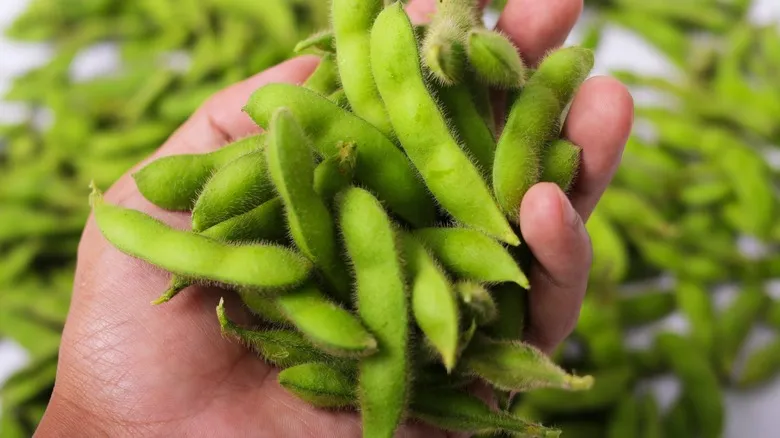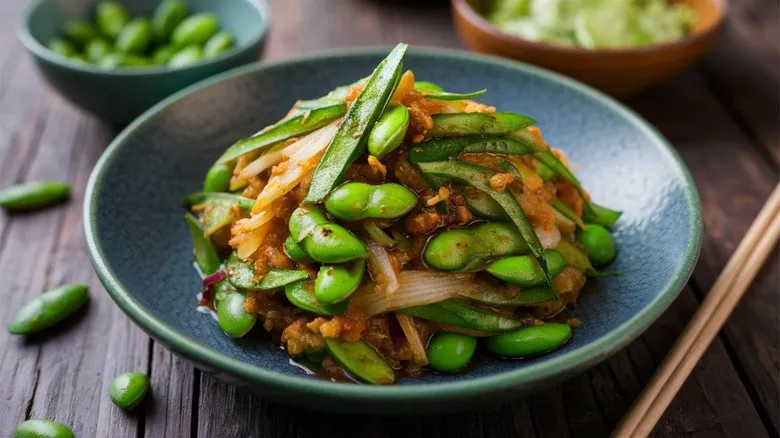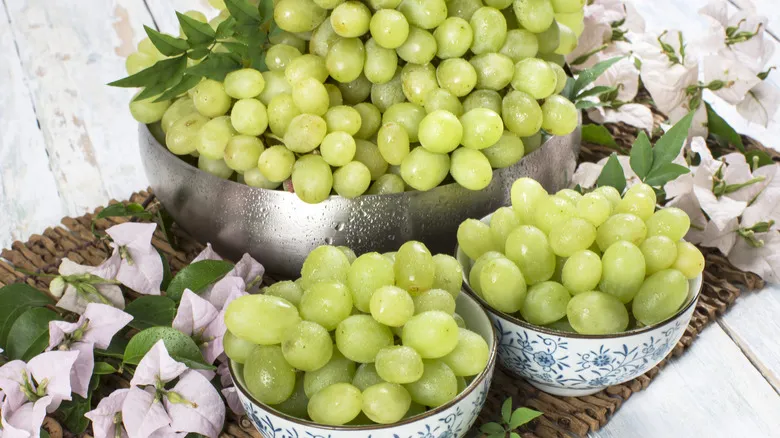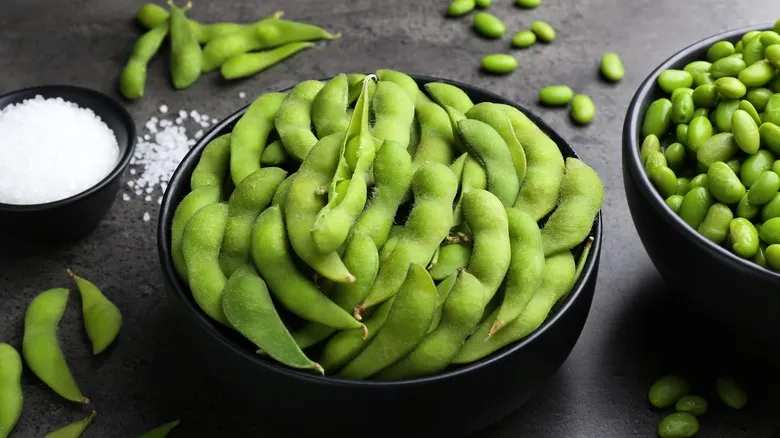What makes a soybean edamame

Edamame is classified as a vegetable soybean, distinct from "field" or "grain" varieties. The entire plant is picked while still young and green, unlike regular soybeans, which are left to mature and dry for later processing. The earliest records of edamame date back to around 200 B.C. in China, where it was known as "mao dou" and recognized for its medicinal properties. By A.D. 927, it was called "aomame" in Japan, and by A.D. 1275, it was specifically identified as edamame.
So, is edamame simply an immature soybean? In a way, yes, but it is a particular variety with significant differences from the more prevalent grain soy. According to the "History of Edamame, Vegetable Soybeans, and Vegetable-Type Soybeans," vegetable soybeans are "harvested at the fresh green stage," before they mature and dry out. In Japan, they are often hand-harvested and sold still attached to the stem (the term edamame translates to "stem bean"). Although they originated in East Asia, vegetable soybeans thrive in various regions around the globe.
When harvested early, these plants are easier to digest and boast higher vitamin content and lower levels of trypsin inhibitors compared to mature grain soybeans, making them tastier and less likely to cause gas. Edamame beans are also larger than their grain soy counterparts and have a sweet, nutty flavor, unlike the stronger bean taste of regular soybeans. Additionally, edamame is typically bright green, while grain soy pods are a pale yellow. Interestingly, as the beans reach their optimal size and color, their flavor begins to diminish due to a decrease in sugar content. Therefore, precise timing during the harvest is crucial for achieving the best edamame.
Grain soybeans dry out in the fields

Most soy products are derived from smaller-beaned varieties of the grain. Similar to wheat, they remain in the field until the pods and beans are dry on the stalks. It is believed that soybeans originated in China thousands of years ago. While vegetable soybeans are harvested when immature—typically between 75 and 100 days after planting—grain soybeans are allowed to mature for about 130 days. The precise timing is influenced by the season's temperature and the length of daylight, as longer days can delay flowering.
Grain soybeans are a rich source of protein, but the dried beans are not particularly palatable on their own. Therefore, they are ground and processed for use in tofu, bean pastes, animal feed, and as a texturizing ingredient. Soy is an incredibly versatile legume, related to other robust beans such as kidney and pinto, as well as peas and chickpeas. Consequently, dried yellow soybeans are utilized in soups and salads, for making soy milk, and as a meat substitute. However, they must be cooked thoroughly for up to six hours to aid digestion—there's no quick-steaming option for grain or yellow varieties! In Japan, grain soybeans are also used to produce natto, a fermented breakfast dish that some may consider an acquired taste.
Other ways to enjoy edamame beans

Steaming edamame to savor directly from the pods or shelling them for vibrant salads and poke bowls are among the most popular methods of preparation. However, there are many other delightful ways to enjoy these beans. In Japan, they are often ground and blended with miso to create a rich, umami-packed soup broth. Across Southeast Asia, you can find snacks made with walnuts, edamame, and sweeteners like honey or molasses, which are also becoming popular in the U.S. Additionally, dry-roasted edamame makes for a fantastic snack, especially for those following a vegan or gluten-free diet (just be sure to check the ingredient list on any new package), and they serve as a great alternative to potato chips.
There's no need to confine your enjoyment of edamame to traditional dishes. Keep a bag in your freezer and use them as a substitute for kidney or navy beans. Incorporate them into a three-bean vegetarian chili or succotash. You can also mash them with garlic and lemon juice to create a unique edamame hummus. For a sweet twist, coat dry-roasted beans in melted dark chocolate to replicate a bittersweet treat that was once available at Trader Joe's. The possibilities are endless!
Recommended

The Secret To Perfectly Cooked Bacon Is An Ingredient Everyone Has

How To Store Your Homemade Ice Cream The Right Way

What Gives Cotton Candy Grapes Their Signature Sweet Flavor

Why You Should Stop Overlooking Ham Steaks
Next up

